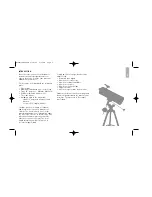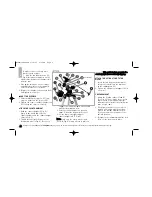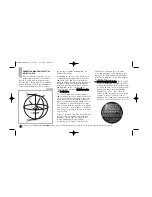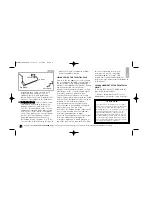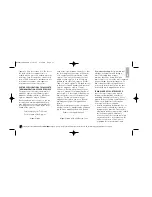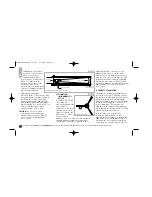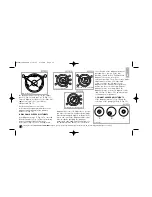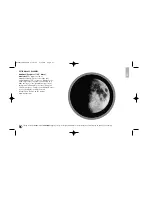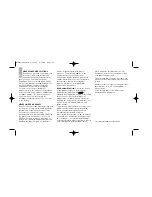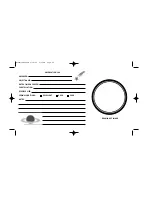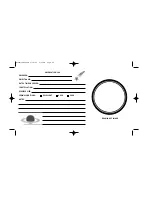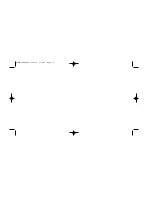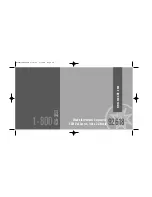
telescope. Do not use use a regular
flash-light or turn on other lights when
observing with a group of other
astronomers. You can make your own
red filtered flashlight by taping red
cellophane over a flashlight lens.
Viewing through windows
: Avoid setting up
the telescope inside a room and observing
through an opened or closed window pane.
Images may appear blurred or distorted due
to temperature differences between inside
and outside air. Also, it is a good idea to
allow your telescope to reach the ambient
(surrounding) outside temperature before
starting an observing session.
When to observe
: Planets and other objects
viewed low on the horizon often lack
sharpness—the same object, when observed
higher in the sky, will appear sharper and
have greater contrast. Try reducing power
(change your eyepiece) if your image is
fuzzy or shimmers. Keep in mind that a
bright, clear, but smaller image is more
interesting than a larger, dimmer, fuzzy
one. Using too high a power eyepiece is one
of the most common mistakes made by
new astronomers.
Dress Warm
: Even on summer nights, the
air can feel cool or cold as the night wears
on. It is important to dress warm or to have
a sweater, jacket, gloves, etc., nearby.
Know your observing site
: If possible, know
the location where you will be observing. Pay
attention to holes in the ground and other
obstacles. Is it a location where wild
animals, such as skunks, snakes, etc., may
appear? Are there viewing obstructions such
as tall trees, street lights, headlights and so
forth? The best locations are dark locations,
the darker the better. Deep space objects
are easiest to see under dark skies. But it is
still possible to observe even in a city.
Surf the Web and visit your local library
:
The internet contains a huge amount of
astronomical information, both for children
and adults. Check out astronomy books from
your library. Look for star charts—these are
available on a monthly basis in
Astronomy
and
Sky and Telescope magazines.
HAVE A GOOD TIME,
ASTRONOMY IS FUN!
SPECIFICATIONS
Optical tube focal length . . 1000mm
Primary mirror diameter . 114mm (4.5")
Focal ratio. . . . . . . . . . . . . . f/8.8
Mounting type. . . . . . . . . . . Equatorial
What do the specifications mean?
Optical tube focal length is simply a
measurement of the length of the optical
tube. In other words, this is the distance
light travels in the telescope before being
brought to focus in you eyepiece. Your tube
is 1000mm long.
Primary mirror diameter is how big the
mirror is on your scope. Telescopes are
always described by how large their primary
mirror is. Your telescope is 114mm or 4.5
inches. Other telescopes are 90mm, 8
inches, 16 inches, or even 3 feet in diameter.
The Hubble Telescope’s objective mirror
has a diameter of 2.4 meters (that’s 7.8
feet across!).
The focal ratio helps determine how fast the
photographic speed of a telescope is. The
lower the focal ratio number, the faster the
14
Looking at or near the
Sun
will cause
irreversible
damage to your eye. Do not point this telescope at or near the Sun. Do not look through the telescope as it is moving.
Meade114EQASTR 3/28/07 9:33 AM Page 16


